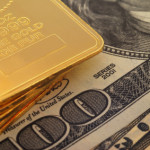Last spring, the Illinois state legislature introduced SB3341 “Precious Metal Purchasing Act,” a bill that would require the registration and even tracking of all purchases of precious metals. The legislation would order a person to obtain proof of ownership, establish a record of the sale and verify the identity of the seller.
“Provides that a person who is in the business of purchasing precious metal shall not pay for the precious metal in cash and shall record the method of payment,” the bill states. “Requires the purchaser to keep a record of the sale for one year or, if the purchase amount is over $500, for 5 years.”
The bill passed the House (sponsored by State Reps. Patricia R. Bellock, Norine Hammond, Michelle Mussman and Pam Roth) and is stuck in the Senate. The latest update came on Nov. 26, 2012 and was assigned to Judiciary I – Civil Law Committee. The Senate (sponsored by Sen. Kirk W. Dillard) introduced an amendment: “Authorizes inspection of records by local police departments. Requires reports to law enforcement on a daily basis. Exempts persons licensed under the Pawnbroker Regulation Act.”
Illinois’s bill went largely unnoticed, but since CNBC’s Rick Santelli had a brief segment on SB3341 last week, it has garnered the attention of finance publications, goldbugs and anti-government websites.
Since Santelli’s report, there have been many conspiracy theories. Whether or not they’re justified, the United States federal government has confiscated gold before and completely abandoned it to through executive power.
“So let me get this straight. First they want gun registration and now precious metal registration?” wrote LibertyBlitzkrieg. “I’m sure the government would only use such information in our best interests, because as we all know: Your Government Loves You. Sounds reasonable, after all, only ‘terrorists’ buy guns and gold anyway.”
In 1933, President Franklin D. Roosevelt, under Executive Order, directed individuals, businesses, corporations, associations or partnerships to give their gold coins, gold bullion and gold certificates to any member of the Federal Reserve Bank System before May 1, 1933. The purpose of the mandatory measure was that the federal government felt its citizens were hoarding gold due to the tough economic times.
Australia performed the same kind of act. In 1959, the Commonwealth government seized its private citizens’ gold in exchange for fiat money in the name of protection of the currency and the credit of the Commonwealth. It was later suspended two decades later.
The U.S. officially went off of gold in 1971 under the order of President Richard Nixon, who noted that “we’re all Keynesians now.” Since then, the U.S. dollar has been backed by nothing and has been depreciated in value since the inception of the Federal Reserve in 1913.





Wonder when we will have to register the buying and selling of underwear, fishing tackle , tools, toothpaste, and toilet paper.